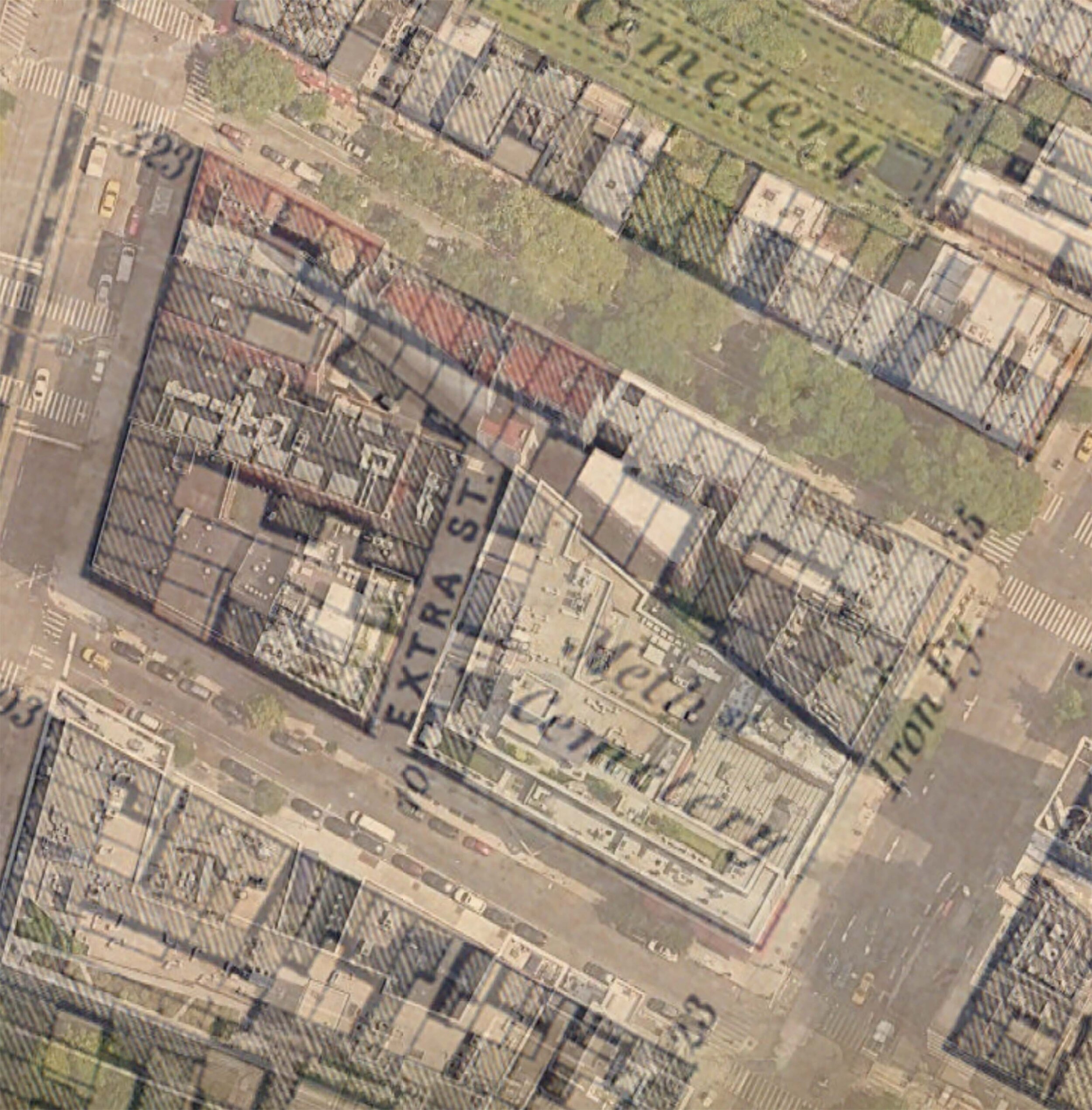PENUMBRA Members Gallery | KATALINA BARRERA
Prior to the yellow fever outbreak in 1822, most of New York City’s dead were buried in lower Manhattan. During the epidemic, downtown cemeteries quickly became overpopulated, and nearby residents feared contamination due to the close proximity of the deceased. This led to the creation of the Rural Cemetery Act of 1852, which allocated undeveloped land in Queens to isolate the dead from densely-populated Manhattan. A majority of the lower class could not afford to relocate their loved ones, so their bodies literally became the foundation of the island’s multimillion-dollar real-estate developments, public schools, swimming pools, and parks. Today, little evidence of these downtown cemeteries remains, beyond city maps drawn in the 18th and 19th centuries.
My thesis project, Over Your Dead Body, utilizes historic and present-day maps such that different time periods can be put in conversation with each other. Exploring what home means to both the living and the dead led me to digitally photograph the underfunded cemeteries in Queens. Printing these images through a 19th-century wet-plate process allowed me to make use of photographic media separated by two centuries. Presenting the resulting glass plates in a reliquary fashion immortalized the fragile state and inevitable future of burial sites in major cities.
The time I spent observing the decaying tombstones in Queens taught me that dying is not finite. A real death is being forgotten.
Katalina Barrera is a photographer based out of New York City and Houston, Texas. She obtained her BFA in Photography at Pratt Institute in 2020. Her work focuses on the ever changing history and state of our existence. This has been expressed through studies of urban development over burial grounds as well as the combining use of modern and historic photographic mediums. Katalina is heavily influenced by her archival work of genealogical and historical materials thus creating themes of isolation and the loss of familial memory into her art.
next →
← previous













